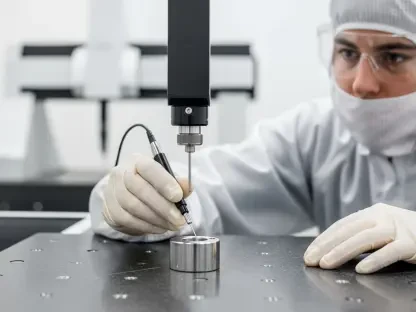Imagine a world where the aerospace and automotive industries rely on materials so lightweight yet incredibly strong that they redefine the boundaries of design and efficiency, pushing the limits of what is possible. This vision is inching closer to reality with the emergence of advanced aluminum-scandium alloys, which promise to transform industrial manufacturing. A recent collaboration between a Montreal-based company and a German metallurgy firm has sparked interest in how these innovative materials could address the pressing demand for high-performance solutions. By integrating scandium into aluminum alloys, the partnership aims to cater to sectors requiring enhanced strength and reduced weight, potentially setting a new standard for critical applications. This development is not just a technical achievement but a glimpse into a future where material innovation drives industrial progress. As industries grapple with the challenges of sustainability and performance, the spotlight on scandium alloys offers a compelling narrative of possibility and transformation.
Pioneering Partnerships in Material Innovation
The recent signing of a Memorandum of Understanding between a Canadian firm specializing in scandium and a German powder metallurgy company marks a significant milestone in the journey of aluminum-scandium alloys. This collaboration focuses on incorporating proprietary alloys, specifically the Sc-modified AA535 and AA7075, into a broader product portfolio tailored for additive manufacturing. These materials are designed to meet the stringent requirements of industries like aerospace and automotive, where lightweight yet durable components are essential. The partnership reflects a growing trend of strategic alliances aimed at accelerating the adoption of advanced materials in high-stakes applications. Moreover, the commitment to exploring commercial potential across the scandium value chain underscores the belief in these alloys’ transformative capabilities. Independent validations have identified numerous industrial uses, ranging from welding wires to heat exchangers, highlighting the versatility that could redefine manufacturing processes in multiple sectors.
Driving Progress Through Research and Validation
The momentum behind aluminum-scandium alloys is further bolstered by robust support from governmental and academic entities, ensuring a solid foundation for innovation. Assistance from Canada’s Industrial Research Assistance Program has facilitated collaboration with the National Research Council of Canada to uncover additional commercial pathways for these materials. Such partnerships emphasize the critical role of research and development in realizing the full potential of advanced alloys. Additionally, the alloys’ unique compositions and fabrication methods are protected by an international patent application, safeguarding intellectual property while encouraging market confidence. Testing and development alongside a prominent Canadian university have yielded promising results, reinforcing the materials’ laboratory-proven properties. As industry leaders and researchers unite to address modern manufacturing challenges, the journey of scandium alloys stands as a testament to the power of collaborative innovation in shaping the future of industrial applications.









